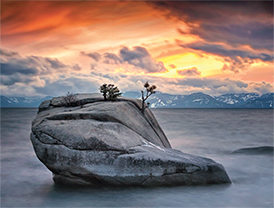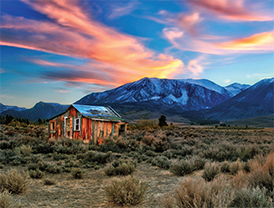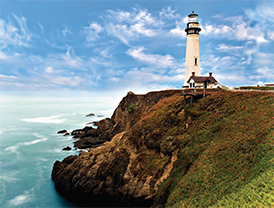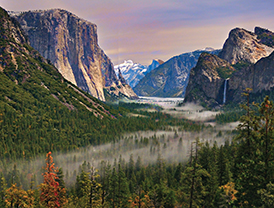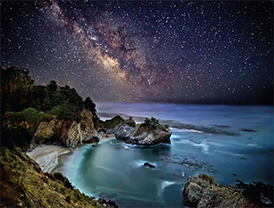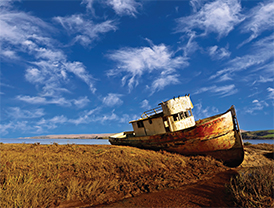In the middle of difficulty lies opportunity
Sapna Reddy is a pediatric radiologist who currentlylives in Northern California. She is also a freelance photographer who combines the genres of landscape and portrait photography and specializes in environmental portraits. She believes that pictures can have a healing effect and her images are used to transform bare hospital walls to beautiful soothing visuals.You can con ect with her at www.facebook.com/ sapnareddyphotography.
Mountain light The blue planet
How did you decide to take up medicine as a profession?
Having several physicians in the family, including my mother and brother, I was exposed to the profession as a child and inspired by them. As I grew older I felt it was the right profession for me given the combination of interaction with people and intellectual challenge.
How did you get introduced to photography?
With a keen interest in exploring new places and new cultures, I started traveling around the world. As I did so, I began to take pictures and share them, initially with family and friends. The pictures were well received and I began to enjoy the photography component as much as the traveling. As my photography gradually improved,n it evolved from a casual interest to an artistic pursuit and a second career.
The lighthouse River of mist
How do you make time for photography?
I believe that if you are passionate about something, you will find a way to pursue your passion. In my case it involves sleeping a little less, and having less free time to read a book or watch a movie. In the middle of difficulty lies opportunity
Your landscape pictures are very attractive. What are your favorite locations for photography?
There are two places that have deep emotional attachment for me. The first is my hometown of Hyderabad, India. Having grown up to the sites and smells of the colourful riot that is Hyderabad, there remains a deep longing to visit, to photograph, to reconnect, and to relive the precious moments. The second is where I belong now, in Northern California. Sorry for the cliché, but isn’t home where the heart is? Where else can we experience the joy of pursuing our art than the places that are closest to our heart!
According to you, how important is good equipment?
Having good gear is important. However, knowing how to use it and having the ability to put it to good use is definitely far more important. Sometimes excellent images are generated by those who do not have top of the line gear and sometimes those with the best of gear produce poor quality images.
How do you prepare for a shoot?
Like the masters say, the key to photography seems to lie in observation. So before I photograph a landscape, I try to spend some time hiking through it. Spending some time at the place, soaking in the atmosphere, relaxing and connecting with nature has become a very enjoyable experience. During my first visit to the place I do minimal photography, perhaps scout out a few sites and shoot a few images with my P&S camera, but mostly try to explore and discover what hidden secrets the place has. Once I am somewhat familiar with the place and feel connected, only then do I begin to chart out where I would like to shoot from, potential compositions, timing for quality of light, etc.
Since every picture is a story without words, prior to clicking the shutter I ask myself, “What is this story about?” “Who/what is the protagonist of this story?”
Based on the answers I then try to compose the shot in such a way that hopefully would draw the viewer into the image and direct the eyes toward the main subject.
Milky Way to McWay falls Abandoned
Digital tools nowadays make significant changes in creating better pictures. Do you use any post processing tools?
Every single picture of mine is post processed without exception. In my opinion the camera is a tool that can be used for the artistic rendition of a scene but is not a comprehensive tool. The digital darkroom, i.e. post-processing with Photoshop or any other software is an integral part of the workflow for generation of an image. I use Lightroom and Adobe Photoshop with luminosity masks and additional plug ins. The primary goal of my post processing is not to fix flaws; I do my best to minimize those while capturing the image in the camera. Rather, it is to render the mood for the scene. The goal of post-processing is to convey what it felt like for me to be standing before the scene, and establish that emotional bridge with the viewer.
What is your advice to beginners in the field?
Enjoy the journey, one picture at a time. It is wonderful when you can nail the shot, but if you can learn to enjoy the process of generating an image without being too worried about the end result, then you will experience a far deeper exhilaration from the art.

